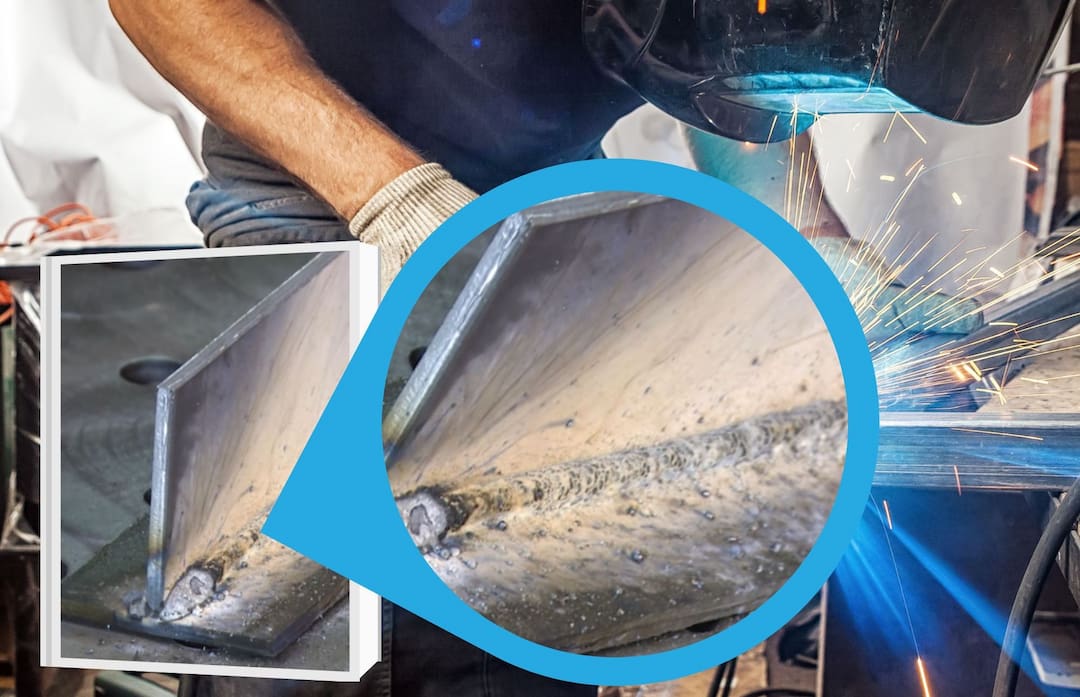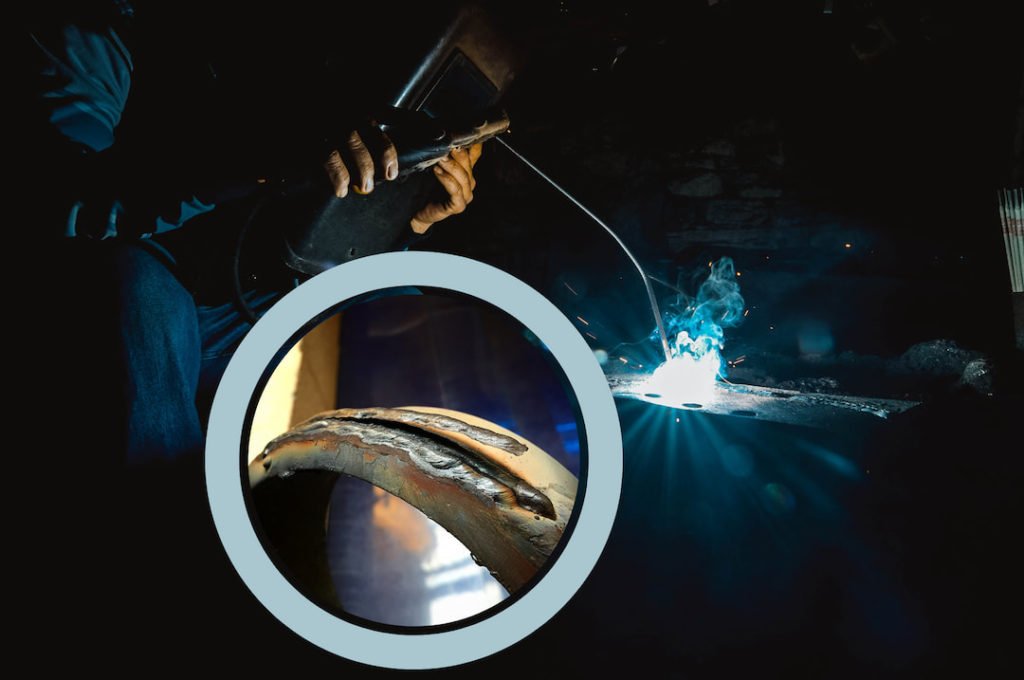As a welder, you know that quality is key in your work. Welding slag impacts the finished product and needs to be properly managed for welders to achieve the desired result.
Table of Contents
However, many welders may not be familiar with welding slag and why it’s so important—this blog post can help! In this post, we'll take a close look at what is welding slag, its purpose in welding processes, how it affects the outcome of projects, and best practices for managing it.
So roll up your sleeves and get ready to learn everything there's to know about welding slag!
Key Takeaways
- During the process of welding when metal that is molted starts spattering on baser metal it may lead to a weld slag. These are beneficial only or until you want it to be. These also may lead to weld slag inclusions on the weld zone.
- You have to remove it properly if you don't want weld slag inclusions on the weld zone, or you can use specific gasses, but not atmospheric gasses, to prevent these defects. If using a grinder, do not remove your welding helmet)
- If slag is not removed properly the weld joint may become weaker or even worse.
- It can be removed using a chipping hammer, wire brush, grinding wheel, or other appropriate tools.
What is Welding Slag?
Welding slag is a molten material created from welding that becomes trapped between the weld and the base metal. Depending on its composition, it can range in color, from dark brown to blue-black.
Welding slag forms an insulative layer on top of base metal and can protect it until it's cooled down. This layer helps transfer heat away from the base metal and prevents it from becoming damaged.
How is welding slag formed, and what is its purpose?
Welding slag forms when the welding process is underway. As molten metal meets the base metal, a reaction occurs that produces heat and sparks, which cause the molten metal to spatter onto the base metal. This creates small particles known as weld slag.
The purpose of this material is twofold; first, it helps protect the weld from environmental elements such as moisture or rust. Secondly it helps fill any air gaps or voids between the weld and base metal, creating a smoother finish regardless of the direction you use, push or pull.
The weld slag also acts as a buffer between the heat source and the base material, which can help prevent thermal shock to the base material during welding.
What are the Different Types of Slag in Welding?
There are two main types of slag in welding; Flux-cored arc welding (FCAW) slag and Shielded metal arc welding (SMAW welder) slag.
Flux-cored arc welding, also known as flux-cored wire or FCAW, is a semi-automatic electric arc welding process. It uses a consumable wire electrode containing a flux core, creating an arc between the wire and the base metal, which melts simultaneously to create strong welds.
Shielded metal arc welding (SMAW) is one of the oldest processes. It uses a metal electrode coated in flux that produces an electric arc between the electrode and the base metal, melting both to create a weld. Shielded metal arc welding is often preferred for portability and weld strength.
The slag inclusions created by these processes can differ in size and composition depending on the type of welding process (even in submerged arc welding) and materials used.
Unlike with MIG machines, FCAW slag particles are generally larger and more coarse than SMAW slag, as they are formed with greater heat input.

Does weld slag cause any problems?
Yes, slag can be problematic in certain situations. If the slag is not removed properly it may cause porosity or contamination of the weld area, leading to a weakened joint and potential failure.
Slag inclusions also have a higher thermal conductivity than the parent metal so it can retain heat and increase weld distortion if left behind.
In order to prevent these issues, removing slag from the work area after welding properly is important. This can be done using a chipping hammer, wire brush, grinding wheel, or other appropriate tools.
When welding certain metals that generate more slag (such as aluminum), flux-cored wires using submerged arc welding may reduce the amount of slag inclusions created.
Properly managing and removing weld slag inclusion can help ensure a safe and successful welding job.
How are slag inclusions developed?
Slag inclusions or pores are tiny voids inside the weld metal or between the weld and the base material. They can be caused by various factors, such as:
- insufficient cleaning of the weld joint before welding
- inadequate shielding gas flow rate
- high heat input from welding with the low current
- improper removal of weld slag inclusions during or after welding.
These inclusions can lead to a weakened joint and potential failure if not corrected.
How to Identify Welding Slag Inclusions?
Welding slag inclusions can be identified by size, shape, and color. Slag inclusions are small particles ranging from 0.5 mm to 1 mm in diameter. They typically have a spheroid shape with an uneven surface and may be gray, black or blue-black.
These particles can be identified visually, by feel, or by running a magnet over the area. If a magnet sticks to the particle, it is likely slag inclusion. Other methods of identifying welding slag inclusions include etching and chemical analysis.
How to Prevent Welding Slag?
You can thoroughly clean the joint area and remove all foreign material before welding. If you adjust the current and voltage settings on the welding machine according to the type of metal being welded, it may be better. After that, use a proper shielding gas flow rate for the welded base material. Finally, properly remove slag during and after welding.
FAQs Related to What is Welding Slag
What is the difference between slag and flux?
Welding slag is a by-product of the welding process that forms on the weld bead, while flux helps to shield and protect the molten weld pool from atmospheric contamination.
Slag is formed when a protective coating of flux oxidizes and melts away during welding, leaving a layer of solid shielding material behind.
Flux, on the other hand, is a protective material added to the welding electrode or wire and forms a barrier between the weld metal and atmospheric contamination.
What causes pinholes in welds?
Several factors can cause pinholes in welds. These include undercutting or overheating, incorrect welding speed, incorrect welding gun angle, and contaminated electrodes.
Pinholes are sometimes caused by poor slag removal due to inadequate cleaning techniques or improper techniques when removing the slag from the weld bead.
What happens if you weld over slag?
Welding over slag can create a weak weld as the welding process relies on proper adhesion of the electrodes to the base metal. The presence of slag in welding between the electrode and workpiece may prevent this from happening, leading to a weak or failed weld.
Excess heat generated during welding may cause the slag to re-melt, contaminating the weld joint with impurities.
To minimize risks associated with welding over slag, it is always recommended to clean and prepare the surface prior to welding thoroughly.
Also, keeping the heat on your welder low will help ensure that re-melted slags do not compromise welds.
